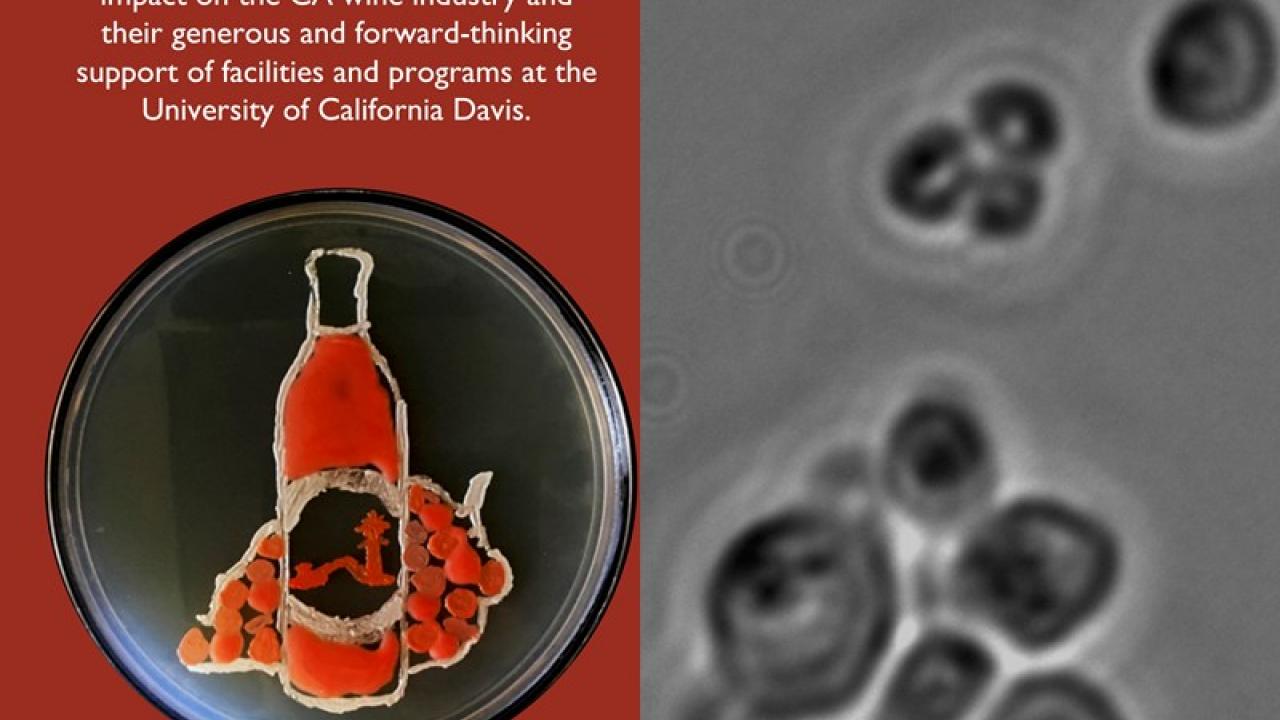
To honor the generosity of Robert and Margrit Mondavi, UC Davis yeast taxonomist Kyria Boundy-Mills with co-authors Gennadi Naumov and Elena Naumova have named a yeast species after them: Komagataella mondaviorum. The yeast species description was published as a peer-reviewed scientific manuscript this month in the scientific journal Antonie van Leeuwenhoek (named after the Dutch inventor of the microscope). The publication, titled, “Description of Komagataella mondaviorum sp. nov., a new sibling species of Komagataella (Pichia) pastoris,“ can be accessed online at https://doi.org/10.1007/s10482-018-1028-6.
This publication includes the etymology of the species name:
Komagataella mondaviorum (mon.da.vio’rum. N. L. gen. masc. plur. n. mondaviorum is named in honor of the late Robert and Margrit Mondavi, honoring their tremendous impact on the California wine industry and their generous and forward-thinking support of facilities and programs at the University of California Davis).

In 2001, Robert and Margrit Mondavi donated $25 million towards new facilities for the Viticulture & Enology and Food Science & Technology departments. One lab in this complex houses the Phaff Yeast Culture Collection, the fourth largest yeast collection of its kind in the world with over 7,500 yeast strains. In fact, the beam signed by dozens of donors and UC Davis personnel that was installed amid great fanfare in a “Topping Off” ceremony in 2007 is now in the ceiling of the room where the Phaff collection yeasts are preserved in freezers.
The five yeasts that received the name K. mondaviorum were isolated by the late UC Davis professor Herman Phaff (1913-2001), who was born the same year as Robert Mondavi. He isolated these yeasts from trees on the UC Davis campus, elsewhere in California, and one strain from Washington state, between 1954 and 1974. These yeasts are among thousands in the Phaff Yeast Culture Collection at the University of California Davis, which contains roughly 800 different species that have valid scientific names, and upwards of 100 additional yeast species that don’t yet have names. The generosity of the Mondavis provided vastly improved lab facilities for culture collection preservation and research
